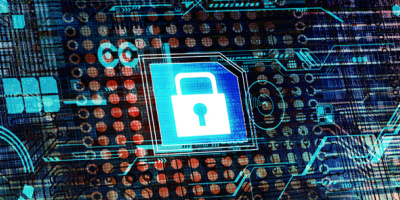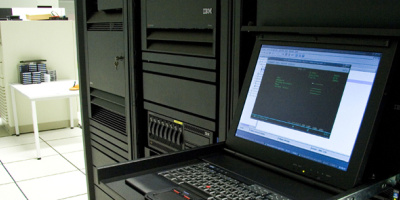Moving to Security Level 40
Question: I used the procedure you recommended for moving from security level 30 to security level 40. I started the audit journal as follows:
• Create a journal receiver:
CRTJRNRCV JRNRCV(AUDLIB/AUDRCV0001) THRESHOLD(5000) +
AUT(*EXCLUDE) TEXT(‘Auditing Journal Receiver’)
• Create the QSYS/QAUDJRN journal:
CRTJRN JRN(QSYS/QAUDJRN) +
RNRCV(JRNLIB/AUDRCV0001)+
AUT(*EXCLUDE) TEXT(‘Auditing Journal’)
• Set the auditing system values (QAUDLVL and QAUDCTL):
CHGSYSVAL SYSVAL(QAUDLVL) VALUE(‘*PGMFAIL’)
CHGSYSVAL SYSVAL(QAUDCTL) VALUE(‘*AUDLVL’)
I have been auditing for about one week, but nothing is being recorded in the audit journal. How can I be sure that the auditing is active?
Answer : If the only selection criterion for audit data was *PGMFAIL, you may not record any violations. You can ver ify that the aud itin g of dom ain fail ures is acti ve b y fo rcin g a doma in f ailu re. The simplest way to cause a domain failure is to call an IBM system state program such as QCARULE. Attempting to call the program returns a domain failure message in the audit journal. Then, use the Display Journal (DSPJRN) command to view the audit journal. Here is the step-by-step procedure to force a domain failure:
1. Fr om t he c omma nd l ine, iss ue t he c ommand CALL QCARULE. The request should fail with an object domain violation recorded in the audit journal.
2. Use DSPJRN to examine the audit journal and entry-specific data for the resulting entry indicated by journal entry type AF as shown in Figure 1.
DSPJRN QAUDJRN
The entry-specific data should appear similar to the following: The D in position 1 of column 00001 of the entry-specific data indicates a domain failure and is followed immediately by the name of the object being accessed (QCARULE in this example).
You were correct to use auditing to determine if you would have any problems moving to security level 40. That nothing was recorded is a positive sign, and you can probably move to security level 40. However, I recommend that you remain at security level 30 until you have completed a month-end close. During your month-end close, you will have run most of the programs in your application, and any problems will have been noted. If no domain failure entries are in the audit journal, you can increase your security level to 40 and IPL your AS/400.
Internet Security
Question: What are the security considerations for connecting an AS/400 to the Internet?
Answer : Security considerations are important when connecting any system to the Internet. With the advent of e-commerce pra ctic es, such as onli ne s hopp ing and onli ne bi ll p ayin g, i nfor mati on p riva cy i s a nece ssit y. I n ad diti on, comm unic atio ns o ver the In tern et o ften con tain con fide ntia l in form atio n th at n eeds to be p rote cted fro m ge nera l ac cess . Th e In tern et w as n ot o rigi nall y de sign ed t o pr otec t se nsit ive or c onfi dent ial da ta. The IP a rchi tect ure allo ws r outi ng c ompu ters to reco rd a ny c ommu nica tion s th at pa ss t hrou gh t he m.
Before connecting your AS/400 to the Internet, you need to start with an AS/400 system that is basically secure. You need to protect your data files and programs by using object-level security. At the very least, your system should meet the following security guidelines:
• The QSECURITY system value is set to at least 40. Level 40 or 50 is strongly recommended because either level provides enhanced integrity protection.
• User profiles, including IBM-supplied user profiles, do not have trivial passwords or passwords that are the same as user profile names.
• Object authority is used to protect your important system resources. Menu security control is meaningless for many of the tools used by Internet browsers. You must set up object authority on your system.
Once your AS/400 system is basically secure, you are ready to consider the following security exposures that exist when attaching an AS/400 to the Internet.
Your first step to participate actively in the Internet will likely be launching a Web site. A Web site is an excellent way to inform the public about your company. You want to present a good public image by providing good, consistent service to those who visit your site. By providing a home page, you are inviting the public to visit your system. However, some of your visitors may be hackers called “graffiti artists” who delight in modifying the content of your Web site. Graffiti artists attempt to gain write access to your Web site in order to change the information to include their own messages, pornographic pictures, and so on. Graffiti artists have actually altered some Web sites of major corporations.
You can exclude graffiti artists by implementing read-only access to directories and files on your site. When you start the HTTP server, be sure not to start the administration server except when maintaining your Web site.
Invalid Input
Graffiti
After successfully establishing your Web site, the next level of expanded Web function is often to allow visitors to enter information such as customer and order numbers. This function can be used to look up information and return output to the user, but accepting input from the Web introduces additional security concerns.
When you design your applications, special focus must be directed toward ensuring that the input you receive is valid. Error checking must be included in your application programs even when the Web site limits the values that can be selected. A hacker may alter or remove any value checks included in your Web page definition.
Think of the Internet as a form of message service. This service operates at blinding speed, sorting and routing messages through various systems in seconds. Unfortunately, this message service also has an awkward twist to it: Anyone can route and forward your messages, and there is nothing to prevent an individual program from reading, copying, and even altering mail as it passes through.
Because the Internet is designed as an open system, it allows any computer on the network to access messages passing through it. It is estimated that 20 percent of the messages you send on the Internet are copied and stored somewhere by someone for future reference. Hackers will often write programs to scan the messages, looking for key phrases such as “PASSWORD,” “User ID,” or “Credit Card” and archive messages only with potential confidential information. Because most messages are sent as plain block text, there is no limit to the different software platforms that can read, copy, and possibly alter the messages you send.
Sensitive information, such as credit card numbers and other confidential data, is subject to being recorded as it flows between systems. Sensitive information must be encrypted to pr even t sn oopi ng. Secu re S ocke ts L ayer sup port on your AS/400 provides a method for encrypting sensitive information.
Denial of Service
If you have done a good job of preventing users from compromising your Web applications, hackers sometimes send invalid transactions to your computer to keep it so busy processing invalid transactions that no productive work can be done. You must protect your production systems from interference by visitors, whether accidental or intentional. In other words, you need to separate your production system from your Web site, either physically or logically.
Firewalls Protect Your AS/400
Firewalls control the access and flow of information between a secure (trusted) network and an insecure (mistrusted) network, such as the Internet. Usually, a combination of hardware and software provides firewall protection. A firewall can be combined with a router in the same hardware, or it can be a separate system.
Firewalls provide several benefits when your network is connected to the Internet:
• Controlled access to internal systems
• Concentrated security administration
• Enhanced privacy and secrecy of your network configuration
• Enforcement of your security policy
• Improved system availability through blocking of denial-of-service attacks
• Statistics of network use and misuse Fo r AS /400 sys tems , Fi rewa ll f or A S/40 0 (a vail able beg inni ng w ith V4R1 ) pr ovid es a sim ple yet affo rdab le f irew all solu tion . Fi rewa ll f or A S/40 0 co nsis ts o f so ftwa re 5 769- FW1 and runs on a de dica ted proc esso r. B ecau se F irew all for AS/4 00 ru ns o n a dedi cate d pr oces sor, it is s epar ate from oth er A S/40 0 pr oces sing (a re quir emen t fo r pr even ting den ial- of-s ervi ce a ttac ks). Fir ewal l fo r AS /400 tak es ad vant age of h ardw are and soft ware res ourc es t hat you alre ady own plus AS/ 400 kn owle dge that you alr eady hav e.
The AS/400 can be safely attached to the Internet. AS/400 integrated security provides one of the most secure servers available. As I read accounts of what information
Snooping
hackers share on how to break into systems, I find no references of attempts to break into AS/400 systems. Hackers seem to focus instead on UNIX-based operating systems.
Object . . . . . . . : Library . . . . . . :
Member . . . . . . . : Sequence . . . . . . : 326938
Code . . . . . . . . : T - Audit trail entry
Type . . . . . . . . : AF - Authority failure
Entry-specific data
Column *...+....1....+....2....+....3....+....4....+....5
00001 'DQCARULE QSYS *PGM WOEVANS WOEVANS '
00051 '012601QCACALL QSYS WOEVANS 0000'
00101 '306 '
Figure 1: This is the audit journal entry for domain failure.





















 More than ever, there is a demand for IT to deliver innovation. Your IBM i has been an essential part of your business operations for years. However, your organization may struggle to maintain the current system and implement new projects. The thousands of customers we've worked with and surveyed state that expectations regarding the digital footprint and vision of the company are not aligned with the current IT environment.
More than ever, there is a demand for IT to deliver innovation. Your IBM i has been an essential part of your business operations for years. However, your organization may struggle to maintain the current system and implement new projects. The thousands of customers we've worked with and surveyed state that expectations regarding the digital footprint and vision of the company are not aligned with the current IT environment. TRY the one package that solves all your document design and printing challenges on all your platforms. Produce bar code labels, electronic forms, ad hoc reports, and RFID tags – without programming! MarkMagic is the only document design and print solution that combines report writing, WYSIWYG label and forms design, and conditional printing in one integrated product. Make sure your data survives when catastrophe hits. Request your trial now! Request Now.
TRY the one package that solves all your document design and printing challenges on all your platforms. Produce bar code labels, electronic forms, ad hoc reports, and RFID tags – without programming! MarkMagic is the only document design and print solution that combines report writing, WYSIWYG label and forms design, and conditional printing in one integrated product. Make sure your data survives when catastrophe hits. Request your trial now! Request Now. Forms of ransomware has been around for over 30 years, and with more and more organizations suffering attacks each year, it continues to endure. What has made ransomware such a durable threat and what is the best way to combat it? In order to prevent ransomware, organizations must first understand how it works.
Forms of ransomware has been around for over 30 years, and with more and more organizations suffering attacks each year, it continues to endure. What has made ransomware such a durable threat and what is the best way to combat it? In order to prevent ransomware, organizations must first understand how it works. Disaster protection is vital to every business. Yet, it often consists of patched together procedures that are prone to error. From automatic backups to data encryption to media management, Robot automates the routine (yet often complex) tasks of iSeries backup and recovery, saving you time and money and making the process safer and more reliable. Automate your backups with the Robot Backup and Recovery Solution. Key features include:
Disaster protection is vital to every business. Yet, it often consists of patched together procedures that are prone to error. From automatic backups to data encryption to media management, Robot automates the routine (yet often complex) tasks of iSeries backup and recovery, saving you time and money and making the process safer and more reliable. Automate your backups with the Robot Backup and Recovery Solution. Key features include: Business users want new applications now. Market and regulatory pressures require faster application updates and delivery into production. Your IBM i developers may be approaching retirement, and you see no sure way to fill their positions with experienced developers. In addition, you may be caught between maintaining your existing applications and the uncertainty of moving to something new.
Business users want new applications now. Market and regulatory pressures require faster application updates and delivery into production. Your IBM i developers may be approaching retirement, and you see no sure way to fill their positions with experienced developers. In addition, you may be caught between maintaining your existing applications and the uncertainty of moving to something new. IT managers hoping to find new IBM i talent are discovering that the pool of experienced RPG programmers and operators or administrators with intimate knowledge of the operating system and the applications that run on it is small. This begs the question: How will you manage the platform that supports such a big part of your business? This guide offers strategies and software suggestions to help you plan IT staffing and resources and smooth the transition after your AS/400 talent retires. Read on to learn:
IT managers hoping to find new IBM i talent are discovering that the pool of experienced RPG programmers and operators or administrators with intimate knowledge of the operating system and the applications that run on it is small. This begs the question: How will you manage the platform that supports such a big part of your business? This guide offers strategies and software suggestions to help you plan IT staffing and resources and smooth the transition after your AS/400 talent retires. Read on to learn:
LATEST COMMENTS
MC Press Online